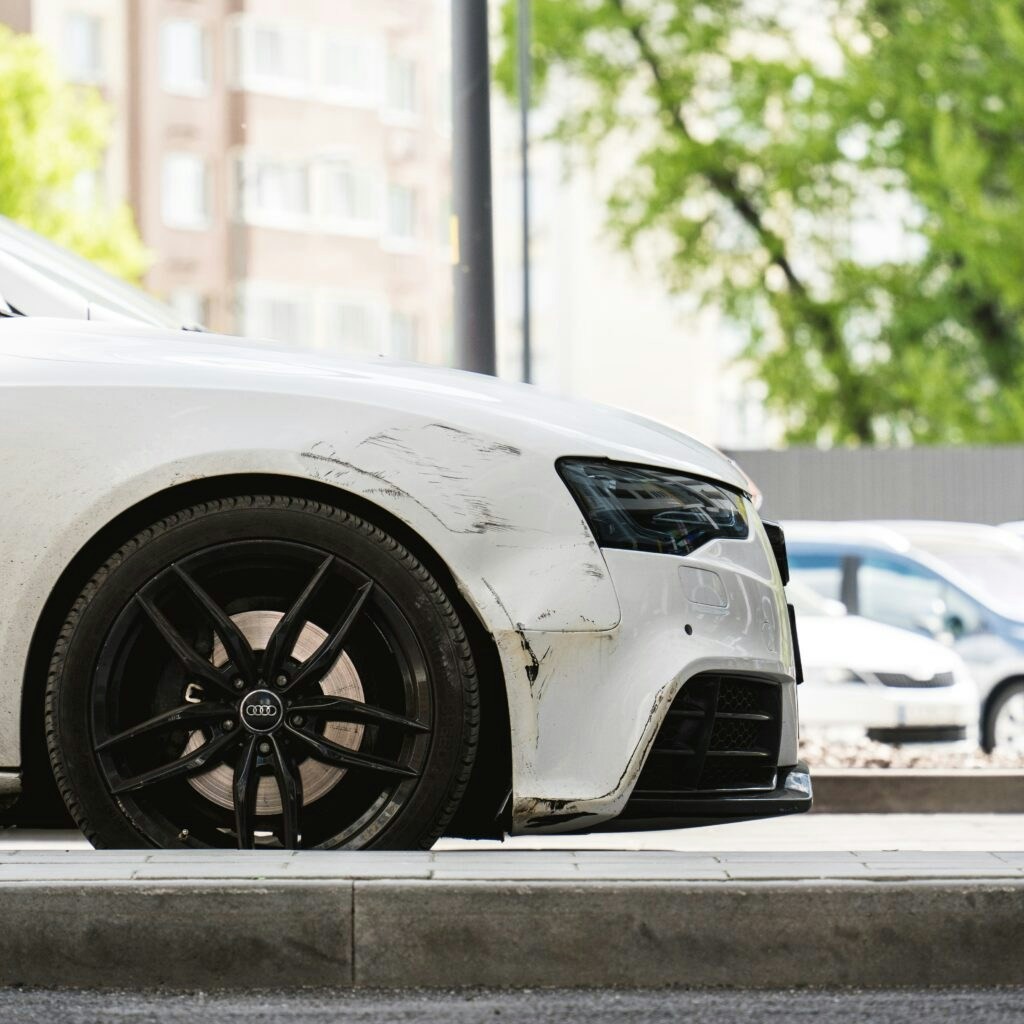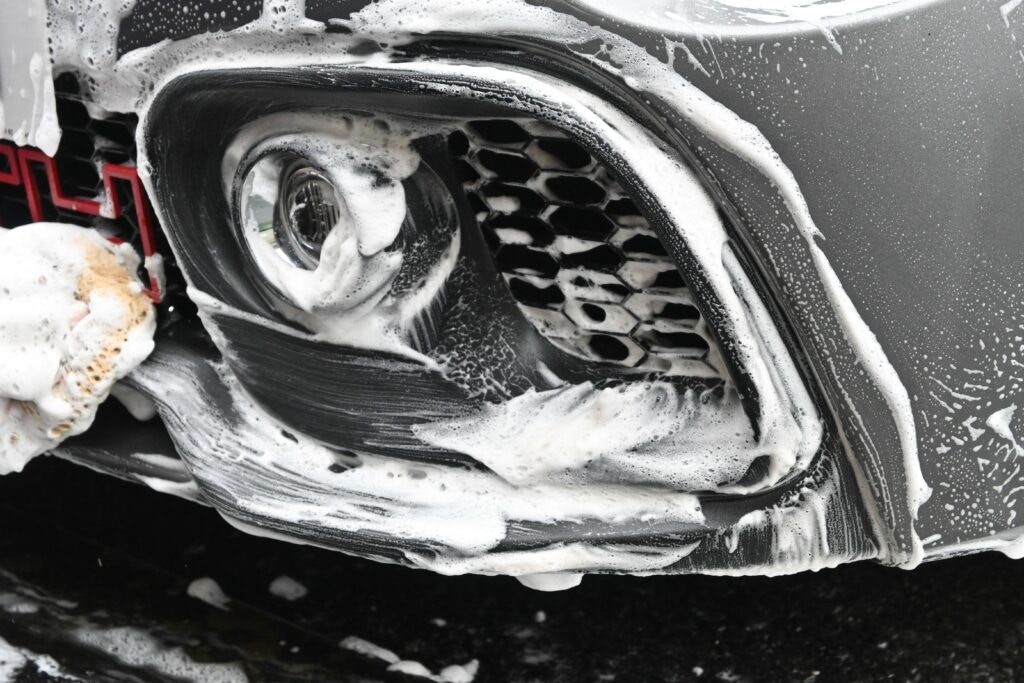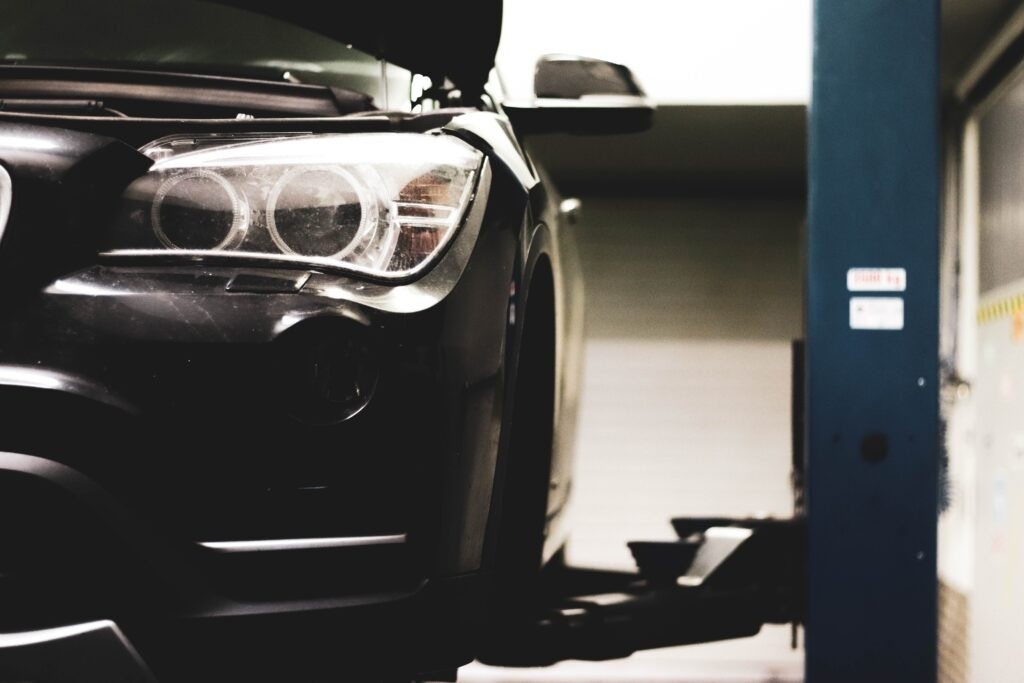Car scratches are more than just an eyesore; they can compromise your vehicle’s bodywork and lead to rust formation. Addressing these blemishes promptly is crucial for maintaining your car’s aesthetics and structural integrity. Whether you are dealing with minor surface-level scratches or deeper paint gouges, understanding effective removal techniques is essential. This guide will walk you through both do-it-yourself (DIY) and professional methods for eliminating car scratches, ensuring your vehicle remains in pristine condition.
Key Takeaways:
- DIY Scratch Removal: Minor scratches can often be handled at home using readily available tools and products.
- Deep Scratch Treatment: Deeper scratches necessitate careful attention to prevent rust and further damage, sometimes requiring professional intervention.
- Cost Awareness: Understanding the potential costs associated with scratch removal helps in budgeting for vehicle maintenance.
- Insurance Policies: Familiarize yourself with your car insurance policy to know if scratch removal is covered and under what circumstances.
 an audi dented and scratched
an audi dented and scratched
Immediate Actions After Discovering a Car Scratch
Upon noticing a scratch on your car, quick assessment and action are vital. Car scratches can arise from various situations, ranging from accidental brushes while parking to deliberate acts of vandalism.
Minor scrapes often occur in parking lots or tight spaces, sometimes making it difficult to determine fault for insurance claims. In these scenarios, if the scratch is minor and you are unsure of the cause, documenting the damage with photos and noting the location and time can be helpful if you later decide to pursue a claim.
Conversely, scratches resulting from vandalism, such as keying, require a different approach. In such instances, it’s imperative to report the incident to the police immediately and inform your car insurance provider. A police report can be crucial when filing an insurance claim for vandalism damage.
Is DIY Car Scratch Repair Possible?
Yes, you can often repair car scratches yourself, especially if they are superficial. The feasibility of DIY repair depends largely on the scratch’s depth and severity. For light scratches that haven’t penetrated the clear coat, DIY solutions are typically effective.
To determine if a scratch is superficial, try the fingernail test: gently run your fingernail across the scratch. If your nail doesn’t catch, the scratch is likely surface-level and manageable with DIY methods. These methods usually involve using polishing compounds, scratch repair kits, and touch-up paints available at most auto parts stores. Regular car waxing and polishing can also help minimize the appearance of minor scratches and protect your car’s paint.
However, for deeper scratches that reach the primer or bare metal, professional repair is generally recommended. Attempting to fix deep scratches yourself without the right tools and expertise can lead to unsatisfactory results or even further damage, such as rust formation. Consulting a professional ensures a proper repair, maintaining your vehicle’s finish and preventing long-term issues.
Step-by-Step Guide: How to Remove a Scratch from Your Car
 a car being cleaned with soap and water
a car being cleaned with soap and water
Removing a scratch from your car can be straightforward, especially if you have the right tools and follow a systematic approach. You can find necessary supplies at auto supply stores or online retailers. Here is a detailed step-by-step guide for DIY scratch removal:
Essential Tools and Equipment
- Car Wash Soap and Water: For cleaning the area around the scratch.
- Microfiber Cloths: Soft cloths for cleaning, applying products, and buffing without scratching the paint.
- Polishing Compound: For removing minor scratches and swirl marks in the clear coat.
- Touch-Up Paint (Matching Car Color): For deeper scratches that have penetrated the clear coat.
- Fine-Grit Sandpaper (3000-grit or higher): For leveling touch-up paint if necessary, use with caution.
- Clear Coat: To protect the touch-up paint and blend the repair with the original finish.
- Rubbing Alcohol or Panel Wipe: For cleaning the area before applying touch-up paint.
- Applicators: Foam applicators, small brushes, or cotton swabs for applying polishing compound and touch-up paint.
- Masking Tape: To protect surrounding areas when sanding or applying touch-up paint.
- Wax or Paint Sealant: To protect the repaired area after scratch removal.
Detailed Scratch Removal Steps
-
Thorough Assessment: Begin by carefully examining the scratch to determine its depth and length. This will dictate the necessary repair method. Is it a light surface scratch, or does it go deeper into the paint layers?
-
Clean the Affected Area: Wash the scratched area and the surrounding paintwork thoroughly with car wash soap and water. This removes dirt, wax, and debris that could interfere with the repair process. Rinse well and ensure the area is completely clean.
-
Dry Completely: Use a clean microfiber cloth to dry the washed area thoroughly. Make sure no moisture remains, as water can hinder the effectiveness of polishing compounds and touch-up paints.
-
Apply Polishing Compound: For superficial scratches, apply a small amount of polishing compound onto a clean microfiber applicator pad. Using circular motions and moderate pressure, work the compound into the scratch. Focus on working along the scratch and slightly beyond it.
-
Buff the Area: After applying the polishing compound, switch to a clean, dry microfiber cloth. Buff the area using circular motions until the polish residue is removed and the scratch starts to diminish or disappear. Inspect the result frequently as you buff.
-
Re-assess the Scratch: Check if the scratch is still visible. For minor scratches, polishing compound alone might be sufficient. If the scratch is deeper and still noticeable, proceed to the next steps involving touch-up paint.
-
Prepare for Touch-Up Paint (For Deeper Scratches): Clean the scratch with rubbing alcohol or panel wipe to remove any remaining polish or contaminants. This ensures proper adhesion of the touch-up paint.
-
Apply Touch-Up Paint: Using a fine-tipped brush (often included with touch-up paint), carefully apply thin layers of touch-up paint into the scratch. Apply paint sparingly, just enough to fill the scratch. Allow each layer to dry completely as per the paint manufacturer’s instructions before applying the next. Multiple thin coats are better than one thick coat to prevent drips and ensure even coverage.
-
Leveling (If Necessary): If the touch-up paint application results in a raised or uneven surface after drying, you can gently level it using fine-grit sandpaper (3000-grit or higher) wrapped around a small, flat block. Wet sand lightly with soapy water as lubricant, using minimal pressure. Be extremely cautious to avoid sanding the surrounding good paint.
-
Apply Clear Coat: Once the touch-up paint is level and dry, apply a thin layer of clear coat over the repaired area to protect the paint and restore the shine. Allow the clear coat to dry completely.
-
Final Buff and Polish: After the clear coat is fully dry, you can use polishing compound again to blend the edges of the repaired area with the surrounding paint and enhance the shine. Finish with a wax or paint sealant to protect the repair and the surrounding paintwork.
-
Final Inspection: Examine the repaired scratch under good lighting to ensure it is no longer visible and the finish is smooth and even. If necessary, repeat polishing or touch-up steps for optimal results.
Effectiveness of Scratch Repair Pens
Scratch repair pens are often marketed as a convenient solution for minor car scratches and paint chips. These pens typically contain clear coat and sometimes a small amount of colored paint. They are designed for very superficial damage, primarily addressing scratches in the clear coat layer.
For very fine, hairline scratches or small chips, scratch repair pens can offer a quick and easy fix. They work by filling in the scratch with clear resin or paint, making the imperfection less noticeable. However, their effectiveness is limited. They are not suitable for deeper scratches that penetrate beyond the clear coat into the base coat or primer.
The results from scratch repair pens can vary based on product quality and user skill. For deeper scratches, they may only partially improve the appearance, and the repair might not be seamless or long-lasting. For more significant scratches, more comprehensive repair methods like polishing compounds, touch-up paint, or professional services are generally more effective.
Repairing Deeper Car Scratches
Deeper scratches, which penetrate through the clear coat and reach the base paint or even the primer, pose a greater challenge for DIY repair. These types of scratches require more involved techniques to prevent rust and ensure a proper color match and finish.
The main difference in repairing deep scratches compared to superficial ones is the necessity for careful surface preparation and layering of touch-up paint to seamlessly blend with the surrounding paint. This often involves:
- Thorough Cleaning and Rust Prevention: Ensure the scratch is free of dirt and rust. If there’s any rust, it needs to be treated with a rust converter before proceeding.
- Primer Application (If Necessary): If the scratch has reached the bare metal, applying a primer is essential for paint adhesion and rust protection.
- Multiple Thin Coats of Touch-Up Paint: Apply several thin layers of touch-up paint, allowing each layer to dry completely. This helps build up the paint in the scratch and achieve better color matching.
- Careful Leveling and Blending: Leveling the touch-up paint with fine-grit sandpaper and then polishing is crucial for a smooth, seamless finish.
Given the complexity and the risk of improper repair leading to further issues like rust or paint mismatch, professional assistance is often advisable for deep scratches. Professionals have the expertise, tools, and color-matching systems to achieve a flawless repair, ensuring both the aesthetic appeal and long-term protection of your vehicle’s paintwork.
Cost of Car Scratch Removal
 a vehicle in a garage
a vehicle in a garage
The cost to remove scratches from car paintwork in the UK varies widely based on several factors:
-
Scratch Severity:
- Superficial Scratches (Clear Coat Only): DIY repair with polishing compounds can cost as little as £20-£50 for materials. Professional polishing may range from £50 to £150 per scratch, depending on size and complexity.
- Deep Scratches (Reaching Base Coat or Primer): DIY repair using touch-up paint and clear coat may cost £30-£80 in materials. Professional repairs for deeper scratches can range from £150 to £500 or more per scratch, often requiring more extensive work like sanding, filling, and repainting.
-
Professional vs. DIY: DIY repair is significantly cheaper for materials, but professional services provide expertise and guaranteed results, justifying the higher cost. Professional services also include labor, equipment, and potentially paint color matching and blending.
-
Number of Scratches: Repairing multiple scratches at once may reduce the per-scratch cost, as professionals often offer package deals or discounts for multiple repairs.
-
Location and Service Provider: Prices can vary geographically across the UK. Dealerships and high-end body shops generally charge more than independent garages or mobile repair services.
-
Type of Repair Technique: Techniques like simple polishing are less expensive than more involved procedures like wet sanding, touch-up painting, or panel respraying.
Car Insurance Coverage for Scratch Removal
Generally, standard car insurance policies do not cover the removal of minor car scratches, dents, or cosmetic damage. Car insurance is primarily designed to cover significant damages resulting from accidents, collisions, theft, or other insured events.
Minor scratches are typically classified as cosmetic damage or wear and tear, which fall under the vehicle owner’s responsibility for maintenance and upkeep. Claiming for minor scratches can sometimes impact your no-claims bonus and potentially increase future premiums, making it financially impractical for minor repairs.
However, there are exceptions:
- Vandalism: If scratches are a result of vandalism, comprehensive car insurance policies usually cover the damage. A police report is typically required to file a vandalism claim.
- Accident-Related Scratches: If scratches are caused by a covered accident, the repair costs might be included in the overall claim.
To confirm your specific coverage, it’s best to review your car insurance policy documents and consult with your insurance provider. For minor scratches, DIY methods or professional repairs paid out-of-pocket are usually more cost-effective than making an insurance claim.
Frequently Asked Questions (FAQs)
Can a Car Scratch Cause an MOT Failure?
Deep or extensive car scratches can potentially cause an MOT (Ministry of Transport) failure if they compromise safety. For instance, scratches that obscure the driver’s view through the windshield or affect the structural integrity of the vehicle might lead to failure. However, superficial scratches and minor cosmetic blemishes are unlikely to cause an MOT failure. The MOT test primarily focuses on safety and roadworthiness, not cosmetic condition.
Is Spray Painting an Option for Car Scratches?
Yes, spray painting can be used to repair car scratches, particularly for larger scratched areas or when touch-up paint application is challenging. For successful spray painting, it’s crucial to:
- Match the Paint Color Code: Ensure you have the exact paint color code for your vehicle to achieve a seamless match.
- Proper Preparation: Thoroughly clean, sand, and prime the scratched area for proper paint adhesion. Mask off surrounding areas to protect them from overspray.
- Apply in Thin Coats: Apply several thin, even coats of spray paint, allowing each coat to dry slightly before applying the next.
- Clear Coat Finish: After the color coat is dry, apply a clear coat to protect the paint and achieve a glossy finish.
- Buff and Polish: Once the clear coat is cured, buff and polish the area to blend the repair with the surrounding paint.
While spray painting can be effective, it requires some skill and careful execution to achieve professional-looking results. For small, isolated scratches, touch-up paint might be more straightforward.
Can WD-40 Remove Scratches from Cars?
WD-40 can temporarily improve the appearance of very minor surface scratches and scuff marks on cars. It works by lubricating and filling in the scratch, making it less visible. However, WD-40 is not a scratch remover; its effects are temporary, and it does not permanently repair the scratch. It can be useful for assessing the severity of a scratch or temporarily improving appearance before a proper repair but is not a long-term solution.
Can Toothpaste Remove Car Scratches?
Toothpaste can sometimes remove very fine, superficial scratches in the clear coat of car paint. Certain types of toothpaste, particularly whitening toothpaste, contain mild abrasives that can act as a very gentle polishing compound. To use toothpaste for scratch removal:
- Clean the scratched area.
- Apply a small amount of non-gel toothpaste to a soft cloth.
- Gently rub the toothpaste into the scratch in circular motions.
- Wipe away the residue with a clean, damp cloth.
Toothpaste is only effective on very minor surface scratches and may not work on deeper scratches or swirl marks. It should be considered a temporary or very light-duty solution. For more effective and lasting scratch removal, dedicated car polishing compounds are recommended.
Determining the Best Time to Sell Your Car
Understanding your car’s current market value is essential, especially when considering repairs like scratch removal and their impact on resale value. Scratches, if left unrepaired, can negatively affect your car’s perceived value and potentially deter buyers.
Motorway’s Car Value Tracker is a helpful tool for monitoring your vehicle’s depreciation and value trends. By tracking your car’s value, you can make informed decisions about whether investing in scratch repairs is financially worthwhile before selling. Knowing your car’s value and how repairs might influence it helps you choose the optimal time to sell and maximize your return.
Ready to Sell Your Car?
For more resources on car ownership, maintenance, and selling, explore our comprehensive guides here. Our guides cover various topics, from environmental regulations like Clean Air Zones to essential ownership aspects like car tax and registration changes, helping you navigate every stage of car ownership.